Deciding which AC system to choose can be worrisome. Should you go for a PTAC unit or a central air conditioning unit? Why not choose a mini split instead? We did research so you can take your time deciding after reading this article.
If you live in an apartment room, go for a PTAC unit. Only choose central air if you want to cool the largest area possible in a building. If you want selective cooling control over a few rooms in your home, a mini split is the best option for you.
Talking about the three AC types together can be confusing because of all the key details that you may be looking for. To help you decide in an organized manner, we’ll be reviewing each of them individually, so keep reading!
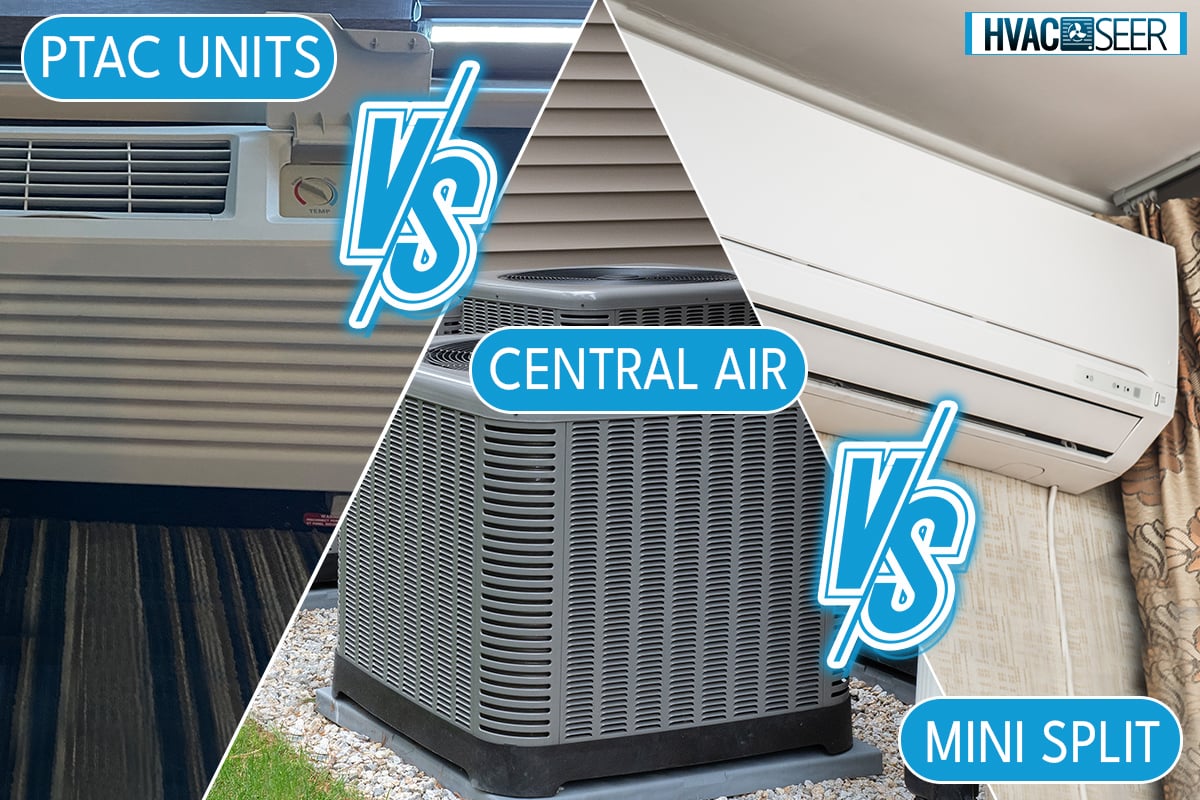
Why Choose A PTAC Unit
Does your entire building need to be cooled? Or does just a certain space has to be cooled off? With PTACs, you may regulate the temperature in a single space without having an impact on the building as a whole.
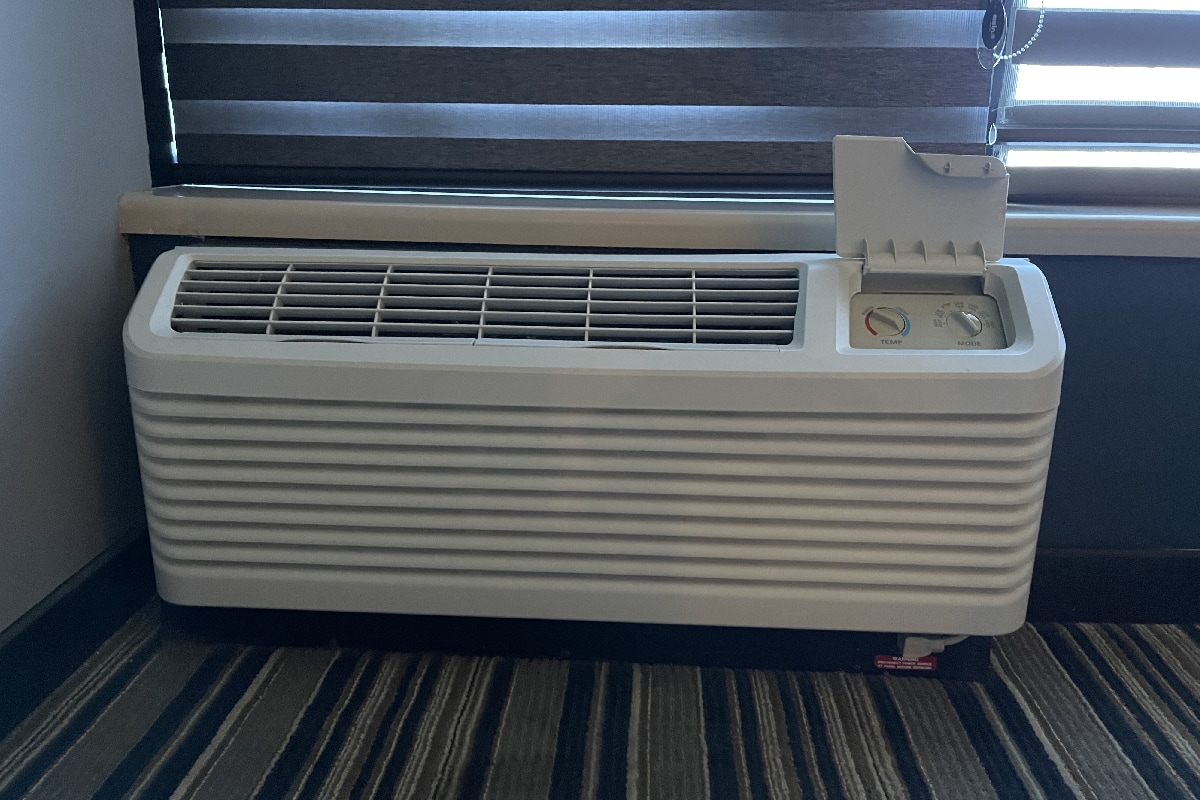
Simple Installation
They are commonly installed in hotel rooms where guests can independently change their room’s temperature. Because PTACs have no separate units, they can be readily installed through a wall.
There is no need to install pricy and obtrusive ducting to use them. PTACs are typically situated beneath windows against exterior walls.
The setup is for the unit’s ventilation and to provide effective cooling. They can also be placed with a metal shield, allowing for direct installation into a wall.
PTAC Units Are Self-Contained
Since these units are entirely self-contained, condensate drain piping is unnecessary. The condensate water collected from the air is dragged by the condenser fan onto the surface of the condenser coil, where it evaporates.
All PTACs Have Heaters
A PTAC is a kind of ductless system that can provide cooling and also heating to a room at the same time. Every unit can either heat through electric heat or a heat pump. Getting a unit with electric heat is inexpensive at first, but due to less efficiency, costs more over time.
Heat pumps are usually more costly upfront but more energy-efficient. The costs can be worth it as they're also more powerful heaters than electric heaters. If it gets too cold during winter, a heat pump PTAC unit will guarantee you more sufficient warmth.
Why Choose Central Air Conditioning
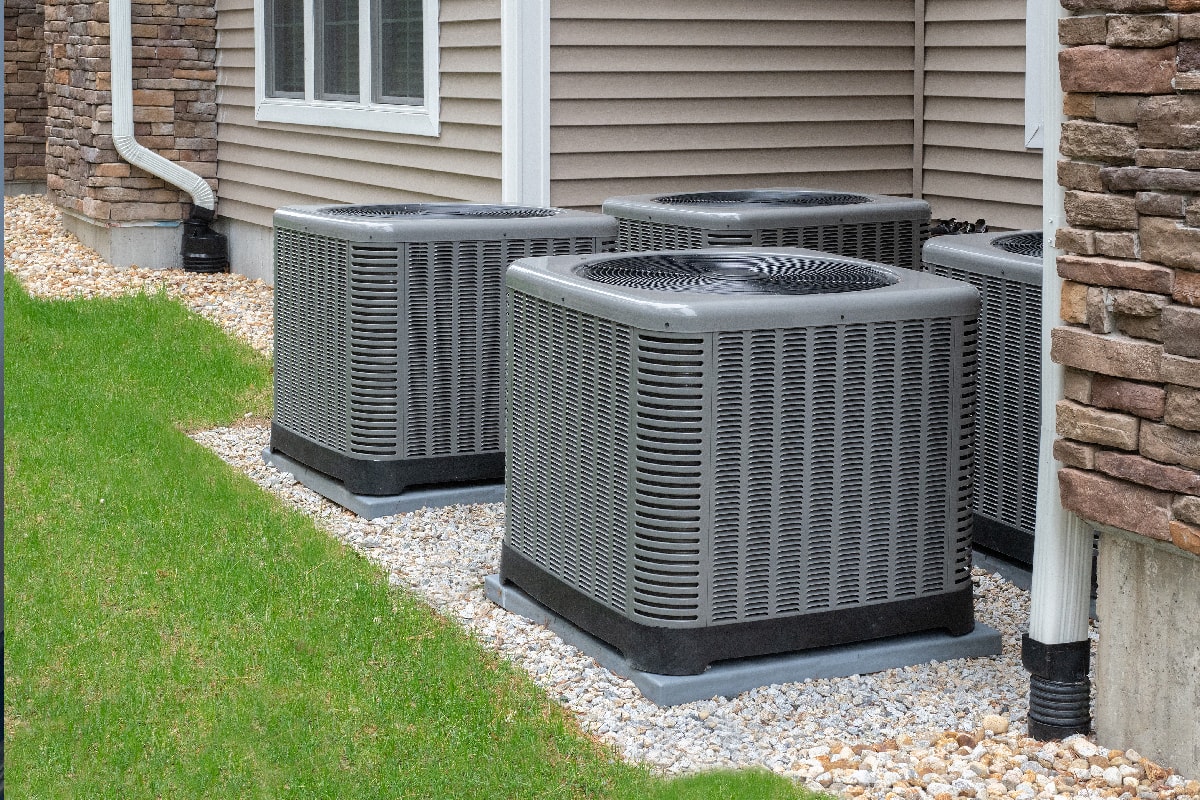
In contrast to a PTAC unit, central air is one of the most cost-efficient ways to generate cool air throughout a house.
Instead of cooling just one room, centralized units concurrently chill every room by allocating cool air throughout the air duct and vent system.
The air in a room travels into the air handler unit via return-air ducts. The air is filtered by the system, which removes airborne contaminants such as lint, pollen, dust, allergens, and pet dander.
The filtered air is subsequently returned to the rooms using a different ducting system. Even the smallest pollutants can be captured by contemporary systems and premium air filters, substantially improving indoor air quality.
A lot of people neglect the negative impact that extremes in temperature—be they too hot, too cold, or regularly fluctuating—can have on their health. Overcooling or overheating can quickly deplete energy, which can lead to lack of energy and weaken immunity.
Delivers Consistent Temperatures
The consistent room temperature provided by a central air conditioning system makes it easier for your body to regulate temperature helping your immune system.
The ducts of central air conditioners feature built-in filters that automatically filter the indoor air before cooling and redistributing it into the space.
Modern air conditioners even come equipped with dehumidifiers and micro-particle filters to purify the air inside homes.
Cools More Rooms Than A PTAC unit
With the use of a system of thermostats and vents, a central air conditioning unit can cool multiple rooms at once (a big advantage over a PTAC unit). This guarantees a year-round supply of cool air in all spaces (be they apartments or offices).
Although they can cost up to $8,000, there are high-quality central air conditioners typically costing around $1,500.
A PTAC unit is literally cheaper, costing between $500-$1,500, with monthly operating expenses ranging from $80-$100, depending on consumption.
In the long term, a central air conditioner will be less expensive if you need to cool more than three rooms. Three PTAC units are more than enough to cover the down payment on a single central air conditioner.
Keep in mind that one central air conditioning unit is more efficient than numerous PTAC units.
Furnaces Also Work With Central Air
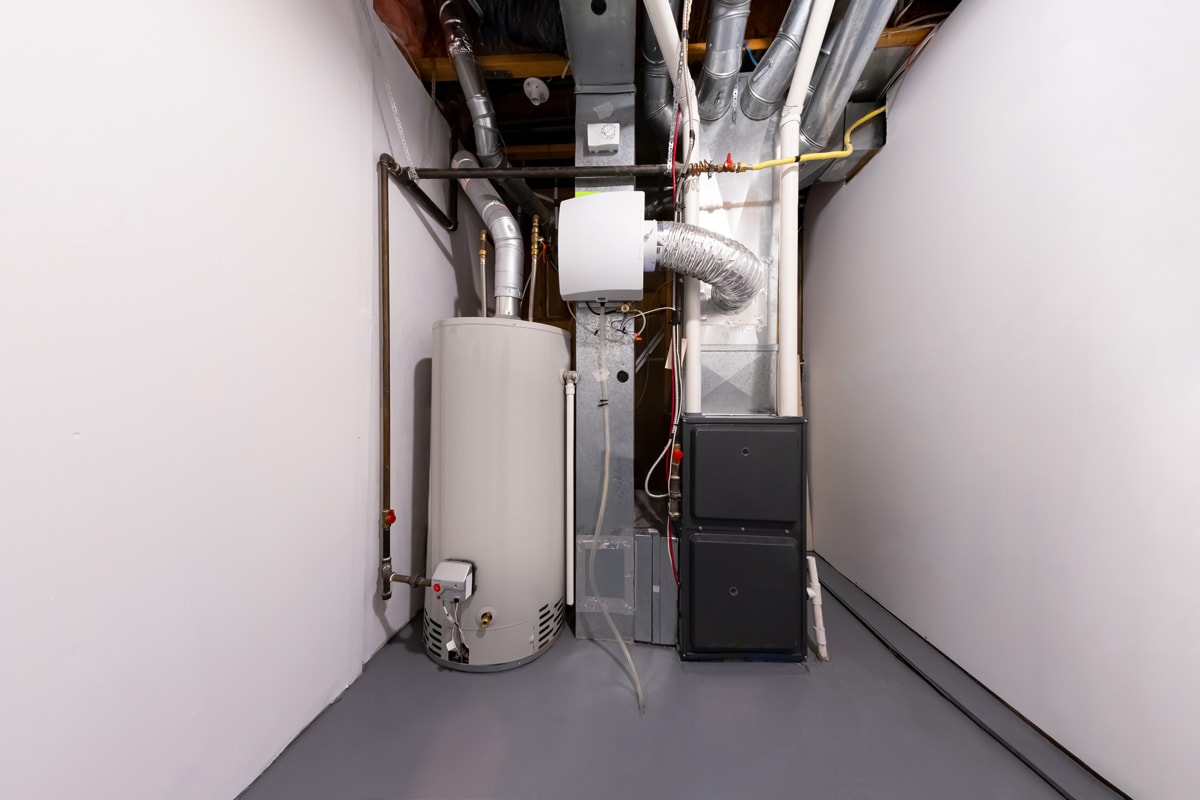
An entire house can be cooled with central air conditioning, which can also regulate the conditioned air in various ways. Furnaces can also work together with central air to keep you warm during winter and cool you off in the summer.
Why Choose A Mini Split
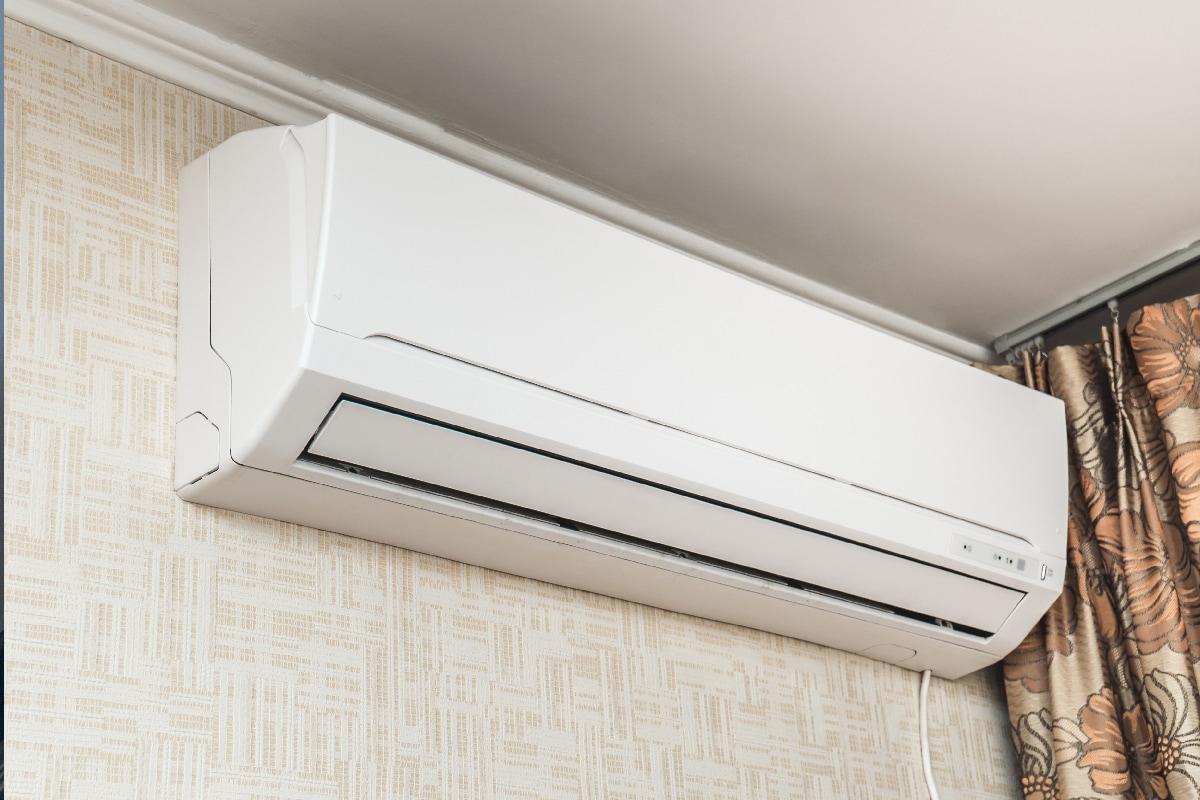
The versatility of mini splits for zoning and cooling particular rooms, together with their compact size, are their key benefits. In some types, there may be up to four interior air handling units coupled with one outside unit (each serving four zones or rooms).
To save energy and money, each of the zones will have a thermostat that will only allow it to cool the rooms that are actually occupied.
Mini splits with inverter technology can self-correct. Depending on the set temperature, they may increase or reduce output.
Advantages Over Ducted Systems
Duct losses, according to the U.S. Department of Energy, can take up more than 30% of the energy consumption for conditioning a space. This applies more accurately if the ducts pass through unconditioned spaces like basements or attics.
Since mini plit systems don’t use ducts, there are no duct-related issues to worry about. Mini plits only need a small three-inch hole in the wall to connect the indoor and outdoor units.
The wires that pass through the three-inch hole in the wall, if left dangling, would be unsightly.
Click here to see this PVC Decorative Line Set Cover on Amazon.
Installing a ductless system is significantly easier and less expensive compared to central air. It does not tear down ceilings and walls to install ducts, especially if you have no existing ductwork.
Can Double As Heater

With a reversing valve, mini split air conditioners can double as heaters. A reversing valve built inside the mini split allows it to function as a heater in cold weather by switching the refrigerant flow direction.
Control Varying Room Temperatures
Another significant feature of a mini split system is its capacity to operate several air handlers (indoor units). Households generally make use of just four air handlers, but a single outdoor unit of this system can reach up to eight indoor units.
This benefit of a ductless system can be controlled to deliver the desired temperatures of certain rooms. You can utilize which air handlers are only necessary to keep your family cool as they can all operate independently.
Central air conditioners would prove to be better in conditioning a whole household, but they can’t provide the level of zoning control mini split systems have.
While mini splits lack ducts that would collect pollutants, they do contain filters. Instead of redistributing the air, these filters capture dirt, dust, and allergens in them. Filters should be cleaned regularly to keep their cooling at their best.
Click here to see this condenser fin cleaning brush set on Amazon.
Highly Efficient
The normal SEER range for whole-home air conditioners is 22 to 24. A ductless mini split can provide cooling that can even reach 42 SEER! This is why mini splits are some of the most efficient AC systems today.
The main reason is that mini splits use a variable-speed compressor (inverter technology). High-voltage electricity is sent into the machinery, which transforms it into DC voltage. As a result, it can accomplish more work with less energy.
In Summary
When the three AC types are compared directly against each other, it becomes clear that they function differently to serve a specific demand on varying households. Once you consider the area of cooling you want, choosing between the three should become a lot easier.
If you found this article helpful, you might also like to read our other posts:


